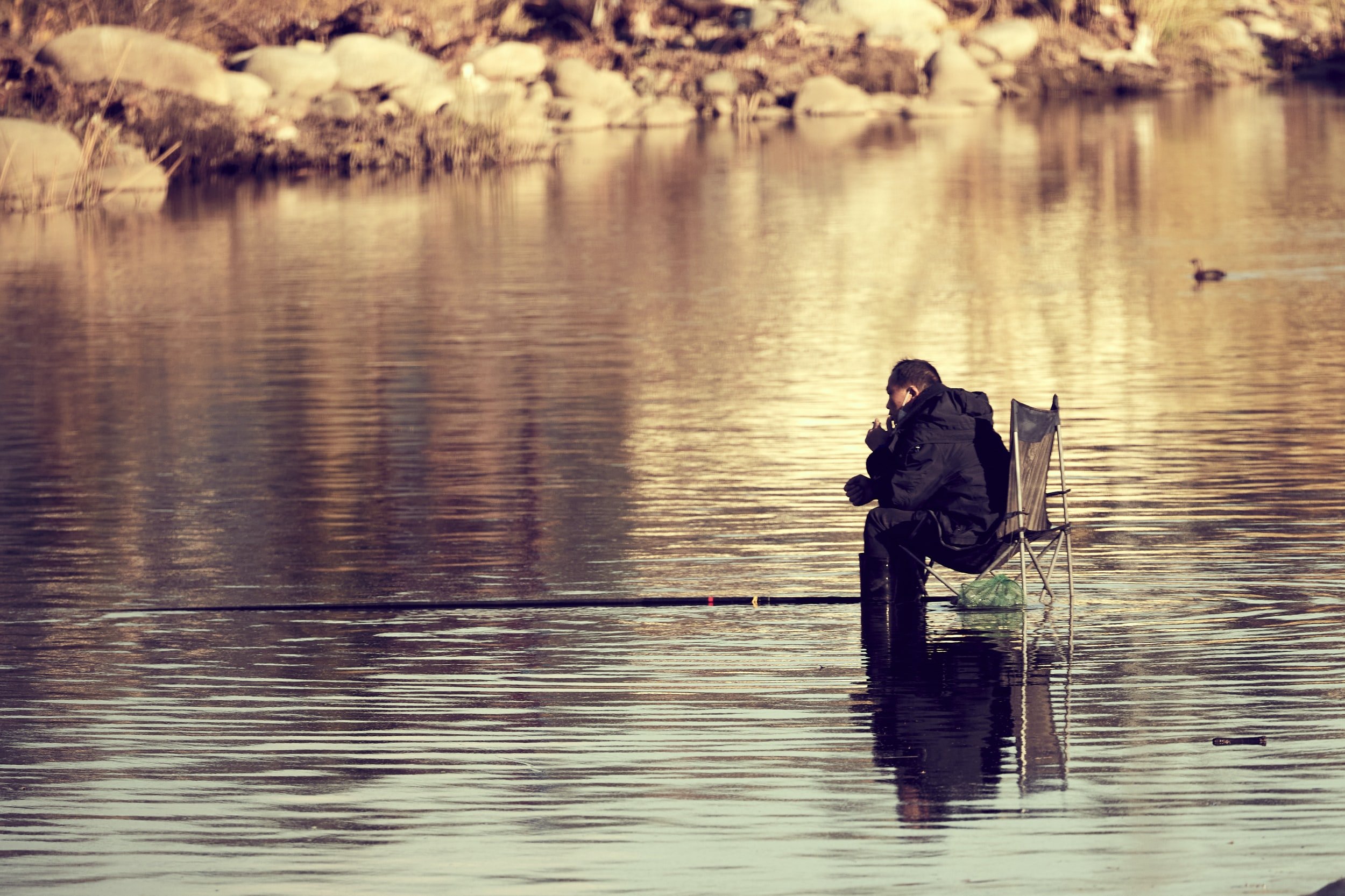It’s Time to Invest in a Better Future for the LA River – and the Communities that Surround It
May 25, 2022The Los Angeles River at sunset.
Before it was a concrete-lined flood channel tamed by hubris and feats of engineering, the Los Angeles River was a wild and unwieldy source of life throughout our region. Then, as now, LA’s weather typically fell into one of two conditions: dry or deluge. These extremes made the rivers’ flows unpredictable even it’s exact location. And so, to protect people and property in this burgeoning metropolis of the 1930s and 40s, the US Army Corps of Engineers shunted the river and its tributaries into a vast network of human-made channels.
Community member fishing. Photo by Eduardo Alemán.
Today, more than one million people live within a mile of the river, which traverses 51 miles from its headwaters in the Santa Susana and Simi Hills to its mouth, where it spills into the Pacific Ocean in Long Beach. The river passes through or in close proximity to 17 cities and flows in and out the unincorporated county. But save for about 11 relatively lush miles in the Glendale Narrows and a small section near Lake Balboa, the river offers little in the way of a sense of place. Most neighborhoods adjacent to the river are low-income areas exposed to high levels of pollution due to the history of placing heavy industry, rail yards and highways along the river’s banks.
Los Angeles County, which plays the largest role in the river’s oversight, recently released the final draft of its update of the LA River Master Plan – the first such update since 1996. Sadly, this update represents one of our region’s greatest lost opportunities. A healthy LA River is the lynchpin to ensuring climate resilience and equity. Improving river management is necessary to recognize the river as a natural feature that should be protected, and to invest in riverside communities that have long been overburdened with pollution. And yet this supposed master plan fails to set a clear vision or pathway forward on either front.
The Arroyo Seco Confluence.
That’s because the LA River Master Plan is essentially a laundry list of possibilities for one of our region’s most important natural resources, with no real commitments made. The plan is neutral as to whether it’s better to cap significant portions of the river with platform parks, sealing its fate as a glorified storm drain, or turn to nature-based solutions to increase recreational opportunities for communities that currently have little access to parks while providing habitat for native wildlife. The plan also preserves the river’s status as a flood control device in perpetuity, dismissing the potential to remove concrete from the river channel and restore natural river banks in ways that would preclude displacement of surrounding communities.
Imagine waking up on a sunny Saturday to take a riverside stroll under a varied canopy of native trees and seeing the river teeming with life, as birds and other wildlife abound. Or enjoying a picnic along the river’s banks on a summer evening after work, where restored green space provides a chance for families of all economic statuses and cultural backgrounds to enjoy cooling shade along miles of riverside parks.
That’s a vision for the river that environmental justice advocates and conservationists alike can get behind. Family-friendly parks could be accessible along the length of the river, as they are in cities around the world where rivers provide a sense of connection. And they would bring nature into existing communities, inviting reinvestment rather than gentrification.
National watershed advocacy organization American Rivers recently named the Los Angeles River among the top ten most endangered rivers in the country for 2022. And despite the significant wake-up call that designation should provide, local water advocates and frontline river-adjacent communities have little faith it will change the County’s plans for the river.
Elected leaders are moving full speed ahead with efforts that - if successful – will cause both further ecological harm to the river and gentrify large swaths of riverside communities by building massive platform parks over the river. That’s the last thing areas like South Gate, Lynwood, Downey, Maywood, and Paramount need.
Adding more concrete to the LA River would take our region, and the river itself, in precisely the wrong direction. It would make Los Angeles an outlier in a world that is finally owning up to the fact that working with, not against, nature provides far superior outcomes.
Los Angeles River Sign.
It’s not too late to change our approach to the LA River. We should be seeking state and federal funding to invest in community-driven projects that provide a multitude of benefits for people and wildlife, like restoring the natural areas that run not only along the mainstem river itself but also the hundreds of rivers and creeks that feed into it.
LA County is at a crossroads: do we want to double down on concrete and forget that a living, breathing river once wended its way through these lands? Or do we want to move toward an equitable and resilient region that works to protect and restore our shared natural resources for the benefit of all?





